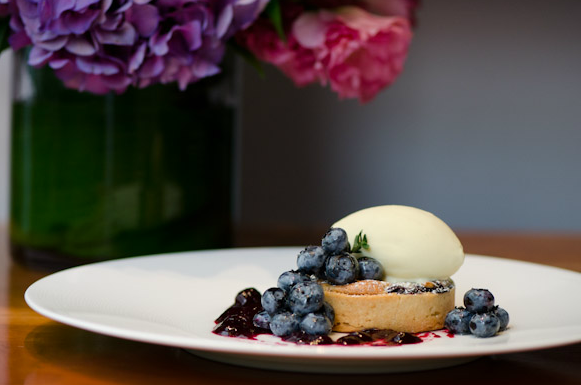For chefs, the notion of shopping locally is a romantic one: Glorious, sun-filled mornings, strolling through the farmers’ market with a warm latte and freshly fried apple cider doughnut in hand.
Stopping for a quick chat with your favorite farmers. Carrying the day’s bounty back to your restaurant in a little red wagon. This is every chef’s dream morning, but that’s not how it really goes down.
Seasonal and local sourcing is not for control freaks; it’s for those who know the only thing you can rely on is change. That leisurely morning at the market? The reality is more like this: Calling the farmers you usually source from a few days in advance and placing your order for market pickup. Crossing your fingers in the coming days, hoping there isn’t too much or too little rain, which may prevent your produce from arriving in tip-top shape. On the day of pick-up, you pray your farmers aren’t delayed (trucks break down, employees get sick, etc.). This experience rarely goes off without a hitch. Odds are, your beautiful, handpicked mâche might not even make it to the market. If you leave with 100% of the produce you expected to source, it’s like winning the lottery. But that’s when your skills as a chef truly come into play because when you have a menu devoted to seasonal and local produce, you actively plan for improvisation. If snap peas lack their snap, you can substitute long beans. If the peaches are overripe, you substitute plums for your tart—or buy the peaches on the cheap and make sorbet.
What’s more, unless you live in California, your local, seasonal menu will run into some seriously limited options. Think about how much grows on the East Coast in December—you learn to get really creative with the rosemary, apples and potatoes that were harvested in November. So if seasonal cooking is so challenging, why do we do it? Is a raspberry grown in Chile in November that bad? It always arrives on time and it always looks and tastes exactly the same. But the downside to that raspberry is the guilt of not knowing how the farmers that harvested those raspberries were treated or paid. It means thinking about all the fuel consumed by the plane that overnighted those raspberries, plus the wasteful packaging needed to get them to my doorstep. Yet, let me make myself clear—those socially conscious factors are terrible things, but I don’t lose sleep over them. What I do lose sleep over is that my raspberry scones won’t be nearly as delicious if I don’t use raspberries grown a few hours away. Because the reality is, most produce grown, distributed and sold locally is harvested at its peak ripeness, and tastes a whole lot better.
So how exactly do chefs pull off a truly local and seasonal menu? The first time I worked at a restaurant that had a “new menu every night” was at Charlie Trotter’s in Chicago. Something on the menu changed everyday. But was the menu rewritten daily from scratch? No way! As cooks, we would have lost our minds. In my experience—though I can’t speak for every restaurant and chef in the country—having a local, seasonal menu means that a component or two on a couple of dishes will regularly change. In other words, it’s a manageable change. And this change is dictated by the markets’ availability. Remember that example of the snap peas and long beans? A quick swap of a veggie on a fish dish and voila: it’s a new menu today. Or keep the side dishes for the pork chop, but switch to a lamb chop. Presto—I’ve done it again! Seems a little sneaky, huh? But it’s not. That’s how it really works. The beauty of minor changes and tweaks every day means that over the course of a season, your menu will gradually morph into something completely different. If you have a chance to look through a chef’s ever-changing menus, it’s a fun snapshot of how his or her mind operates. It’s a study in the various flavor combinations that a particular chef might love.
So do restaurants that promote seasonal, local menus really change every day? Probably not. And do chefs exclusively source their ingredients locally? Most often, no (can you even wrap your head around never using lemons in New York City?). But does this mean all these restaurants and chefs are just pulling the wool over our eyes? Absolutely not! Instead, they are making the most inventive food they can, with the best ingredients available to them. The combination is magnificent and demonstrates how far our food industry has come in its appreciation of what ends up on your plate.
Want to take classes with Chef Jenny at ICE? Click here to learn more about our Pastry & Baking Arts program.








